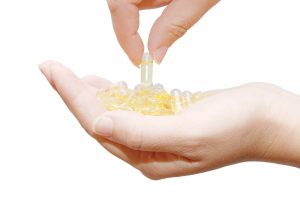Published on March 4, 2022
Vitamin D supplementation done correctly can lead to great health benefits, but when taken in very large “pulse” or “bolus” doses, it can lead to a paradoxical vitamin D deficiency and contradictory results
Key Points
- Bolus or pulse dosing (giving large doses of vitamin D infrequently and at lengthy intervals) without maintenance dosing (giving vitamin D daily or weekly, at most) may create a paradoxical state of vitamin D deficiency and negative health effects
- Published findings from studies using such dosing create skepticism about the value of vitamin D, even amidst the large body of research in support of its use. This skepticism can be seen among doctors and others in authoritative roles within the medical system – and is a major factor delaying the implementation of vitamin D science into practice.
- Large changes in vitamin D create changes in the enzymes that handle vitamin D. These enzymes function below their capacity without regular doses of vitamin D, and they over-adapt when too much vitamin D is received as a way to prevent toxicity. When additional large amounts of vitamin D are not given soon enough after the original large dose, the body enters a deficient state.
- This paradoxical effect is not seen when large doses of vitamin D, such as loading doses, are followed by regular maintenance doses, which are preferably taken on a daily and no more than a weekly basis

The risks of severe vitamin D deficiency can range from rickets in children to osteomalacia in adults. Low vitamin D is also associated with an increased risk of cancer, acute respiratory infections, COVID-19, and much more. All of these associations are backed by plenty of research and known biological actions of vitamin D, as is the use of vitamin D for the treatment and prevention of diseases such as rickets, tuberculosis, and acute respiratory infections. However, a recent study on rickets concluded that vitamin D (100,000 IU given every 3 months for 18 months) was ineffective at preventing a disease of vitamin D deficiency… How could that be?
High-Dose, Intermittent Vitamin D Therapy May be Unsafe and Ineffective
Bolus or pulse dosing (giving large doses of vitamin D infrequently and at lengthy intervals) without maintenance dosing (giving vitamin D daily or weekly, at most) is proving to be how NOT to supplement with vitamin D. Nutrient researchers have defined the use of bolus dosing in a study as an indicator that the study’s results may not be reliable. Studies using bolus dosing often find contradictory results, such as the study published by Bischoff-Ferrari et al. that claimed no benefit of vitamin D for falls and fractures when given in monthly doses, and several studies giving large bolus doses without daily vitamin D for acute respiratory infections and COVID-19, as discussed in a perspective paper by Griffen et al..
The published findings from such studies then create skepticism about the use and value of vitamin D, even amidst the large body of research in support of its use. This skepticism can be seen among doctors and others in authoritative roles within the medical system – and is a major factor delaying the implementation of vitamin D science into practice.
With approximately 90% of the US population having vitamin D levels below the expert scientists’ recommended 40-60 ng/ml (100-150 nmol/L) along with the resulting health risks, bolus dosing in research is a dangerous practice that should be ended immediately.
Why Bolus Dosing Does Not Work
As pointed out in the paper by Griffen et al.,
“…vitamin D supplementation is associated with significant reduction in risk for a range of acute respiratory infections but only when given as regular daily maintenance and not when given at weekly or 1–3-monthly intervals.”
What could be the reason for this and similar findings with other diseases?
There are several reasons getting vitamin D on a daily to weekly basis is essential. The body needs all forms of vitamin D, with some cells and tissues requiring a steady supply of vitamin D3 itself (the form made in the skin upon UVB exposure and taken in most supplements) for optimal function. While the longest lived form of vitamin D, 25(OH)D (the form measured in the blood to determine vitamin D status), has a half-life (the amount of time in which half of a substance is gone from the body) of about 2-3 weeks in the circulation and around 2-3 months for the whole body, vitamin D3 has a half-life of roughly 24 hours. The hormonal from, 1,25(OH)2D, is shortest lived at less than 12 hours in the circulation. The supply of vitamin D3 quickly diminishes in the body and must be replenished regularly, so in order for it to have a meaningful impact on cellular functions, you need a new supply of it every day.
Enzymes that Maintain Balance Can be Thrown Off with Bolus Dosing
An erythmal dose of vitamin D (the amount generated upon exposure to sunlight) is equivalent to approximately 10,000 to 25,000 IU of vitamin D3. According to Griffin et al., even at such doses, “It is impossible for vitamin D toxicity to occur through ultraviolet exposure (and extremely high repeated dosing is required for this to occur via supplementation).” This is due to activity of the 24-hydroxylase enzyme, a vitamin D inactivator (it breaks down vitamin D to inactive forms), which increases in response to a large bolus dose of vitamin D. Studies have shown that the activity of this enzyme remains increased for quite some time after a large dose of vitamin D, with a half-life of several weeks. Unfortunately, what this may lead to is a potential intracellular vitamin D deficiency following a single large dose of vitamin D.
Dr. Reinhold Vieth explains this effect in response to bolus or “pulse dosing” (what he refers to as large monthly dosing) in the audio interview here. The way Dr. Vieth describes it, large changes in vitamin D create changes in the enzymes that handle vitamin D. The enzymes function below their capacity without regular doses of vitamin D, and they over-adapt when too much vitamin D is thrown their way as a way to prevent toxicity. By taking a large dose you turn on the machinery to break it down. Meanwhile the system is prepared for additional large amounts of vitamin D, and when it doesn’t get more, the body enters a deficient state.
As Dr. Vieth puts it, in essence, bolus dosing is faking out the body. You’re tricking it on a monthly (or longer) basis by telling the body “Oh, we’ve got a lot of vitamin D now, you can throw away the extra!” But then you take the vitamin D away and the body is still getting used to throwing away extra vitamin D, which effectively causes what he calls a paradoxical vitamin D deficiency and can lead to negative consequences.
Listen to the interview here:
Maintenance vs Loading vs Bolus Dosing
Keep in mind that this paradoxical effect is not seen when large doses of vitamin D, such as loading doses, are followed by regular maintenance doses, which are preferably taken on a daily and no more than a weekly basis. Loading doses are given as an option to help achieve a target level within days, versus using only a maintenance dose, which may take 2-3 months or longer to reach a target level. It is a safe and effective option for participants with vitamin D levels that are known to be much lower than desired, or for those who are needing to raise levels quickly due to a health condition or health concern (such as boosting the immune system).
How Much Vitamin D do YOU Need? Measure Today to Find Out!
 Having and maintaining healthy vitamin D levels and other nutrient levels can help improve your health now and for your future. Choose which additional nutrients to measure, such as your omega-3s and essential minerals including magnesium and zinc, by creating your custom home test kit today. Take steps to improve the status of each of these measurements to benefit your overall health. With measurement you can then determine how much is needed and steps to achieve your goals. You can also track your own intakes, symptoms and results to see what works best for YOU.
Having and maintaining healthy vitamin D levels and other nutrient levels can help improve your health now and for your future. Choose which additional nutrients to measure, such as your omega-3s and essential minerals including magnesium and zinc, by creating your custom home test kit today. Take steps to improve the status of each of these measurements to benefit your overall health. With measurement you can then determine how much is needed and steps to achieve your goals. You can also track your own intakes, symptoms and results to see what works best for YOU.
Enroll in D*action and Test Your Levels Today!





